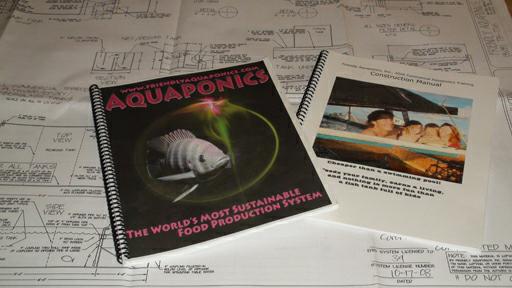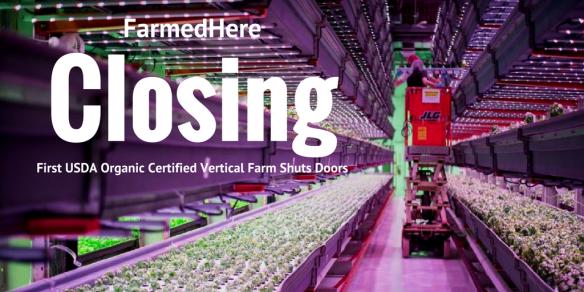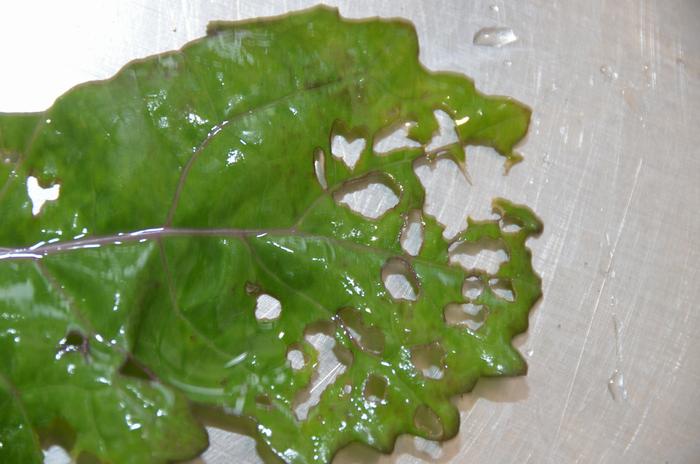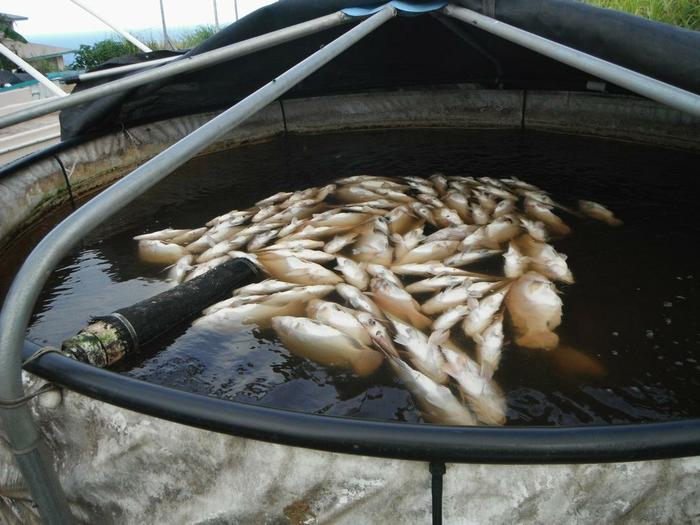How Greenhouses Work, Part 1
This is the first part of what’s probably going to be an 8 or 10-part series by the time we’re done. That’s because there’s a LOT of ground to cover [Read more…]
This is the first part of what’s probably going to be an 8 or 10-part series by the time we’re done. That’s because there’s a LOT of ground to cover [Read more…]
This is a big farm; if you’re going to build something this size, expect to spend between $1.8 and $2.7 million, depending on where you’re located in the USA, and who does the construction for you. The costs in the spreadsheet are for building the farm inside a leased space; if you’re also planning on buying an existing building, or buying land and constructing a building, it’s going to cost you that much more. But this farm can also bring in from $1-1.4 million gross income per year, if you do everything right. We charged a serious fee for designing this farm; so you’re getting an incredible value to be able to download the plans for free.
1. “Economy Of Scale”: what this means is that if you build an indoor farm half the size of the one in the plans, it WON’T cost half as much. It’s more likely to cost 75% of the indoor farm that’s twice as big. It’s easy to understand why if you look at this example: building a car. A car has a certain number of parts, each of a certain complexity. But if you build a working car that’s half size, it STILL has exactly the same number of parts, each of the same complexity. The only difference is that they’re half as big; they still take the same amount of time to machine and assemble, which are your biggest costs! If you build a car one-quarter the size of a real one, the same applies; only now the parts are so small that this car might actually cost MORE to build, and now people REALLY won’t fit in it, which is the whole reason for a car in the first place, isn’t it?
The same applies to a farm: you still need troughs, fish tanks, pumps, sprouting tables, employee locker and break area, mop sink, processing area, fork lift, water heater, walkin refrigerator, office area, and so on. You have just as many “things”, and it will take nearly the same time to design, run the plans past the City Building Department, and build. Only you’ll spend a LOT more per square foot of grow area and per pound of vegetables the thing will put out, and you will be working harder for less money. And isn’t that the whole reason for having an indoor farm in the first place; to make a profit?
2. How big is your local market? This 9,500 square foot example produces an average of 300,000 pounds of vegetables per year. Can you sell that much in the area immediately around the farm, or transport it via refrigerated truck economically to a location where you can sell it?
3. Do you want to run this yourself, and train all your workers? I hope so, because there simply isn’t an existing labor pool of experienced aquaponics workers, especially not experienced indoor farm MANAGERS! You’ll 99% likely have to do this yourself. And you’ll find that trying to be an absentee indoor aquaponic farm owner is a sure recipe for financial disaster!
4. So you’ve answered Yes to #3: next you need to ask yourself how long you want to do this for. It will take 7-8 years at normal rates of amortization (paying off the loan or financing) to be in the clear on this farm. Maybe you’re making a profit at the end of year one, and you want to sell your valuable business. Who do you sell it to? Seriously! Aquaponics, and especially indoor aquaponics, is so NEW that it may be difficult to find someone to buy it. Such a person needs to understand the business, AND have the money to buy it. Such a person may be hard to find, or even impossible!

So far we’ve only talked about issues specific to indoor vertical aquaponic growing; there are a bunch of additional questions you need to answer before you can proceed with any confidence with a large indoor grow. We list them here, and provide links to read more about them:
You do not want to learn to drive in a loaded 18-wheeler with a 12-speed manual transmission going downhill at night in the rain! You want to start on a sunny day in a Toyota Corolla with an automatic transmission! In the same way, you do not want to learn how to “drive” in a 20,000-square-foot indoor vertical aquaponics system with a $6,000/month loan payment and $10,000 per month of overhead expenses! It’s got way too much inertia and way too many “moving parts”.
But this is the way all the failures in our “Aquaponics Failures” PowerPoint slideshow started. The moral of the story? Even for someone who plans to go “big time”, it’s smart to start small. Read the “Failures” slideshow AND “The Business Of Aquaponics”, for which there’s a download link a little further down the page, and you’ll have a much better idea of how to start and avoid disasters caused by the semi-truck-and-trailer inertia of a big aquaponics farm.
How do you know what will grow the best in your indoors aquaponics farm unless you try it yourself? Are you going to rely on advice from someone who’s growing their aquaponic produce in a greenhouse? Rely on advice from an outdoors soil gardener? Both of those are SO different than growing indoors that the information you’ll get is likely to be misleading at best, and useless at worst. Download this document to see how to do your own Test Grow.
More important stuff to know about before taking the plunge. It’s too much to put into a blog post: 21 pages to cover all this stuff adequately. Right out of our $995 Commercial Aquaponics DIY manual; click here to download the document.
Here’s the link to the Vertical Indoors Farm spreadsheet again, that we first presented in #4 of this blog series: Click on this link to download the data in spreadsheet form. If you haven’t used spreadsheets before, or used them much, here’s a set of instructions that will make it easier: Click this link to download the instructions for that spreadsheet.
If you put the numbers you’ve learned from your six months to a year of Test Grows, plus the marketing information you learned after doing the test marketing suggested in “Advertising, Marketing, Selling, The Production Timeline, And Getting Off The Ground”, into this spreadsheet, PLUS accurate cost numbers for building and operating your indoor aquaponics farm in your location, then you’ll have a number that will give you an idea whether or not your venture can be profitable.
(Below) The caption says it all.
CAN is the operable word here; because if you guess at any of the numbers in the spreadsheet rather than taking the time and effort to research them and nail them down, your results will be fantasy rather than a useful projection. And we’d much rather go see the Lego Movie again for our fantasy needs: we LOVED IT the first four times we saw it!
But, if rather than spend all this time and effort doing Test Grows, Test Marketing, Starting Small, you’d prefer to gamble, and have the funds to do it with, why go right ahead. All the failures in The Failures slideshow did ($100,000 up to $22,000,000).
In our first three systems, we put down a non-woven commercial grade weed mat PLUS a woven weed mat on top between the troughs before building the troughs, then covered it with 3″ of gravel. This solution was expensive, [Read more…]

Insects are invertebrates,

As we mentioned in other articles, in a normal organic aquaponics system, your nitrate level will vary [Read more…]
We’ll begin with a normally operating organic aquaponics system that we use calcium carbonate in for adjusting pH. In such a system, your ammonia and nitrite levels will vary from 0.25 to 1 ppm; and your nitrate level will vary from 1 to 10 ppm (with occasional periods lasting months in which nitrates are not measurable at all, but the vegetables just keep growing explosively!). As your fish get bigger, it’s tempting to feed them more, so you do. What you will notice at some point is that, as a result of feeding your fish more, and them generating more fish poop, your system ammonia level will begin rising (from its normal range of 0.25 to 1 ppm) up to 2 ppm, then 3 ppm, and so on.
This is happening because your limited number of bacteria do not have an unlimited ability to process ammonia into nitrites and then into nitrates! When more ammonia shows up in the system than they can metabolize and convert, you have simply overwhelmed the ability of your bacteria to process ammonia and the ammonia level will continue to rise until you do something to stop it, such as feeding your fish less.
Although your system will work fine with a very small amount of fish, if you have too many fish and/or feed them too much, your ammonia level will rise. Fortunately, there’s a simple solution to this problem: stop feeding them so much! You can easily go from feeding your fish three times a day to once. If that doesn’t do it, feed them once every other day. After a week to two of feeding the fish less, you will notice the ammonia level coming down from 3 ppm to 2, then to 1, which is where it should be.
The amount you feed the fish controls your ammonia level. This is totally logical: more fish food in, more fish poop and ammonia out, regardless of the number of fish involved. They may get irritated if fed less, but it won’t kill them; fish are not like people in this respect. We’ve omitted feeding our tilapia for up to a three weeks at a time with no ill effects except they splash like crazy and soak the “feeder person” when they finally are fed!
(Below) A huge mass of tomato roots that an employee decided was “OK” to leave in the trough to decay. Ammonia in this system went through the roof!
|
It would have been easier just to leave this 100-pound wad of tomato roots in the trough when the tomato plants were removed, but they would have decayed and generated lots of ammonia that would negatively affect the system’s operation.
Remove any “stray” sources of ammonia such as this from your system as soon as you become aware of them! |
When the situation becomes too extreme, as when you are feeding your fish every third day, but the ammonia level is still rising, you need to sell some fish. Sell half of them and get them out of your system! Although you can’t grow fish at a profit (you lose money, remember?), your fish will still get bigger and bigger until you have too many pounds of fish and too much ammonia. This is the indicator that it’s time to sell fish; this creates cash flow too! Selling fish will help pay for the expense of raising them to be your “fertilizer generator”.
There is one more thing you should know: overfeeding the fish is not the only way to clobber your system with too much ammonia. If you have any other source of decaying organic material in your system, it will give off ammonia as part of the decay process. If your ammonia is rising quickly, look for dead stuff, such as a dead fish caught in a pipe, or a huge mass of roots or other vegetable material that a careless employee dumped into a trough instead of removing (see photo above).